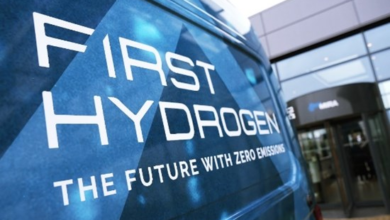Bloom Energy begun hydrogen production with the world’s most efficient solid oxide electrolyzer

Bloom Energy has begun generating hydrogen from the world’s largest solid oxide electrolyzer installation at NASA’s Ames Research Center, the historic Moffett Field research facility in Mountain View, Calif.
This high-temperature, high-efficiency unit produces 20-25% more hydrogen per megawatt (MW) than commercially demonstrated lower-temperature electrolyzers such as proton electrolyte membrane (PEM) or alkaline.
This electrolyzer demonstration showcases the maturity, efficiency and commercial readiness of Bloom’s solid oxide technology for large-scale, clean hydrogen production. The 4 MW Bloom Electrolyzer™, delivering the equivalent of over 2.4 metric tonnes per day of hydrogen output, was built, installed and operationalized in a span of two months to demonstrate the speed and ease of deployment.
“This demonstration is a major milestone for reaching net-zero goals,” said KR Sridhar. “Hydrogen will be essential for storing intermittent and curtailed energy and for decarbonizing industrial energy use. Commercially viable electrolyzers are the key to unlocking the energy storage puzzle, and solid oxide electrolyzers offer inherently superior technology and economic advantages. Bloom Energy, as the global leader in solid oxide technology, is proud to share this exciting demonstration with the world: our product is ready for prime time.”
The current demonstration expands on Bloom’s recent project on a 100 kW system located at the Department of Energy’s Idaho National Laboratory (INL) which achieved record-breaking electrolyzer efficiency. In the ongoing project, 4500 hours of full load operations have been completed with a Bloom Electrolyzer™ producing hydrogen more efficiently than any other process – over 25% more efficiently than low-temperature electrolysis.
The INL steam and load simulations replicated nuclear power conditions to validate the full capability of technology application at nuclear facilities, and the pilot results revealed the Bloom Electrolyzer producing hydrogen at 37.7 kWh per kg of hydrogen. Dynamic testing conducted at INL included ramping down the system from 100 percent of rated power to 5 percent in less than 10 minutes without adverse system impacts. Even at 5 percent of the rated load, the energy efficiency (kWh/kg) was as good as or better than other electrolyzer technologies at their 100% rated capacity. These results will be presented at the Department of Energy’s Annual Review Meeting in Washington DC.
“The amount of electricity needed by the electrolyzer to make hydrogen will be the most dominant factor in determining hydrogen production cost. For this reason, the efficiency of the electrolyzer, the electricity needed to produce a kilogram of hydrogen becomes the most critical figure of merit. This 4 MW demonstration at the NASA Ames Research Center proves that the energy efficiency of our large-scale electrolyzer is similar to the small-scale system tested at INL highlighting the strength of our modular architecture,” said Dr. Ravi Prasher.
“The electrolyzer product is leveraging the Bloom platform knowhow of more than 1 GW of solid oxide fuel cells deployed in the field and providing approximately 1 trillion cumulative cell operating hours. The same technology platform that can convert natural gas and hydrogen to electricity can be used reversibly to convert electricity to hydrogen. With Bloom’s high-efficiency, high-temperature solid oxide electrolyzers, we are one step closer to a decarbonized future powered by low-cost clean hydrogen.”
This demonstration represents a “full circle moment” for the company, which can trace its roots to work performed as part of NASA’s Mars Space Program in the early 2000s. Dr. KR Sridhar and his team were charged with creating a technology that could sustain life on Mars. They built electrolyzers capable of producing oxygen and fuel from solar electricity on Mars, and operated the device in the reverse direction as a fuel cell to produce electricity. They soon realized that their technology could have an even greater impact here on Earth and founded Bloom Energy in 2001 with the mission to make clean, reliable energy affordable for everyone on earth. This hydrogen demonstration is at the NASA Moffett Field site where Bloom Energy started operations over 20 years ago in a 7000 sq. ft. garage.
